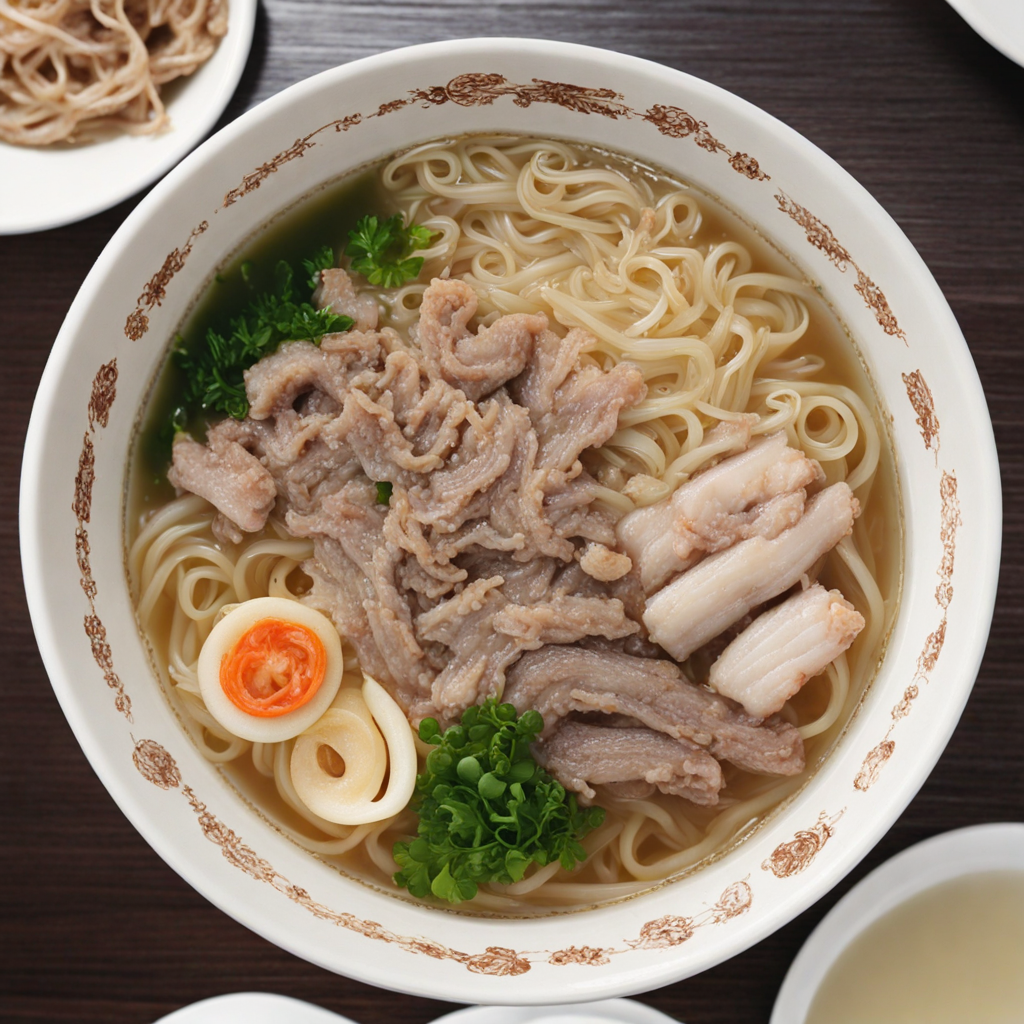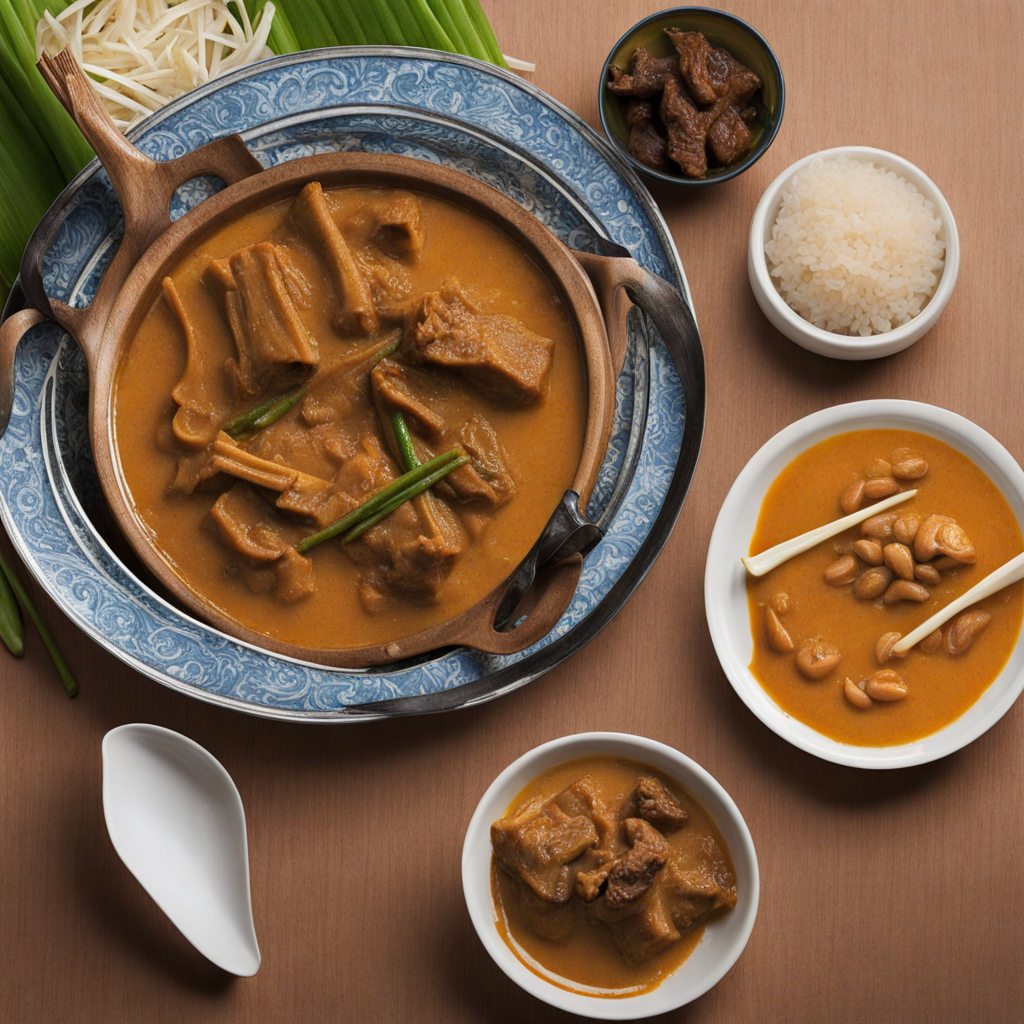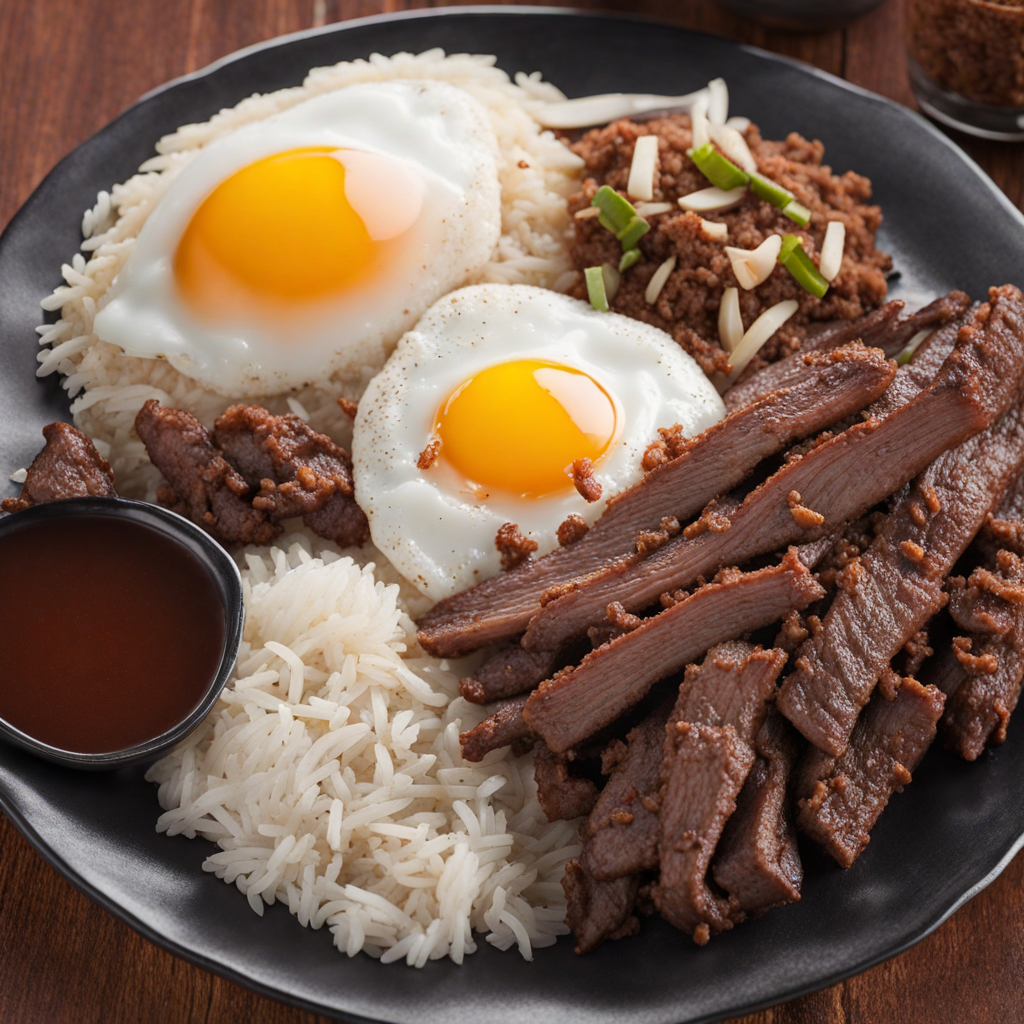Batchoy
Batchoy is a hearty noodle soup that hails from the Philippines, particularly popular in the Ilocos region. This dish is a comforting blend of flavors, featuring a rich and savory broth made from pork bones, which are simmered for hours to extract their deep, umami essence. The addition of soy sauce, garlic, and sometimes a hint of ginger adds layers of complexity to the broth, making each spoonful a warm embrace for the palate. The noodles used in Batchoy are typically egg noodles, which soak up the flavorful broth, creating a satisfying texture that complements the soup's richness. What truly sets Batchoy apart is its array of toppings that are generously piled on top of the noodles and broth. Common garnishes include tender slices of pork, often combined with chicharrón (crispy pork cracklings) for a delightful crunch. Fresh herbs like green onions and sometimes even a sprinkle of fried garlic enhance the aroma and add a fresh, vibrant note. A hard-boiled egg is frequently included, providing a creamy richness that elevates the dish even further, while a drizzle of chili oil or a squeeze of calamansi juice can be added for those who desire an extra kick of heat and tang. Batchoy is not just a meal; it's an experience that reflects the warmth and hospitality of Filipino culture. Often enjoyed in a communal setting, this dish brings people together, encouraging sharing and conversation over bowls of steaming goodness. Whether you're savoring it for breakfast, lunch, or dinner, Batchoy is a delightful way to explore the flavors of the Philippines, enticing you with its hearty ingredients and comforting warmth that is perfect for any time of year.
How It Became This Dish
The History of Batchoy: A Filipino Culinary Treasure Introduction: A Culinary Heritage Batchoy, a beloved noodle soup dish from the Philippines, particularly hailing from the city of Iloilo, is more than just a meal; it is a symbol of cultural identity, communal ties, and historical evolution. With its rich flavors and hearty ingredients, Batchoy encapsulates the diverse influences that have shaped Filipino cuisine over the centuries. In this exploration, we will delve into the origins, cultural significance, and the development of Batchoy through time. Origins: The Birth of Batchoy The roots of Batchoy can be traced back to the late 19th century in Iloilo City, during a period when the Philippines was under Spanish colonial rule. The name "Batchoy" is believed to have derived from the Hokkien word "ba-chui," which translates to "meat" or "to boil." This reflects the dish’s fundamental components: rich broth, meat, and noodles. It is said that Batchoy was originally created by Chinese immigrants who settled in the Philippines, bringing with them their culinary traditions. They adapted local ingredients and flavors, resulting in a unique fusion that would give rise to this iconic dish. The use of pork, beef, and various innards, such as liver and intestines, highlights the influence of Chinese cooking techniques, while the incorporation of local spices and herbs showcases Filipino flavors. Cultural Significance: A Dish of Community and Comfort Batchoy is more than just a dish; it embodies the spirit of hospitality and community in Filipino culture. Traditionally, it is served during gatherings and celebrations, symbolizing warmth and togetherness. In Iloilo, Batchoy is often enjoyed at family reunions, fiestas, and other social occasions, reinforcing bonds among family and friends. The dish is not only cherished for its taste but also for the stories and memories it evokes. For many Ilonggos (people from Iloilo), Batchoy is a nostalgic reminder of their childhood, often associated with family kitchens where the simmering broth and aromatic spices filled the air. Various places in Iloilo, like the famous "Ted's Batchoy," have become landmarks, drawing locals and tourists alike to experience authentic Batchoy, further solidifying its status as a cultural icon. Development Over Time: Evolution and Variations As Batchoy gained popularity, it evolved, leading to several regional variations across the Philippines. In its original form, Iloilo Batchoy typically features a rich, savory broth made from pork bones, enhanced with spices such as ginger, garlic, and onion. The dish is then topped with a generous serving of pork, beef, and sometimes chicken, along with egg noodles. It is often garnished with chopped green onions, chicharrón (crispy pork skin), and sometimes even a raw egg, which adds creaminess and richness to the soup. In contrast, other regions have put their own twist on the dish. For instance, in La Paz, a district of Iloilo City, La Paz Batchoy is known for its distinct flavor profile, often featuring a lighter broth and a more pronounced seasoning with patis (fish sauce). It is typically served with a mix of pork and beef, and its unique taste has made it a favorite among locals and visitors alike. The growth of Batchoy's popularity has also been supported by the proliferation of restaurants and food stalls specializing in the dish, both in the Philippines and abroad. This exposure has led to innovative interpretations, such as vegetarian or fusion versions, allowing Batchoy to reach an even broader audience. Some contemporary chefs have experimented with gourmet takes on Batchoy, incorporating artisanal ingredients and modern cooking techniques while still respecting the traditional essence of the dish. Global Recognition: Batchoy Beyond Borders The global diaspora of Filipinos has played a significant role in introducing Batchoy to international audiences. Filipino communities in the United States, Canada, and other countries have embraced this dish, establishing restaurants that serve traditional Batchoy alongside other Filipino favorites. These establishments not only cater to the cravings of Filipino expatriates but also introduce the flavors of the Philippines to a diverse clientele. Furthermore, Batchoy has been featured in various food festivals and culinary events, showcasing its cultural significance and culinary appeal. Chefs and food enthusiasts worldwide have begun to recognize Batchoy as a quintessential Filipino dish, representing the rich tapestry of flavors and culinary practices that define the Philippines. The Future of Batchoy: A Legacy of Flavor As Batchoy continues to evolve, it remains anchored in its cultural roots. The dish serves as a reminder of the Philippines' complex history, marked by a blend of indigenous, Spanish, and Chinese influences. It illustrates how food can transcend boundaries and foster connections among people, regardless of their backgrounds. The future of Batchoy looks promising, with ongoing efforts to preserve traditional recipes while embracing innovation. Culinary schools and workshops in the Philippines are increasingly focusing on local dishes, ensuring that the younger generation appreciates the importance of their culinary heritage. As chefs experiment with new flavors and presentations, Batchoy will likely continue to capture the hearts and palates of food lovers around the world. Conclusion: A Dish to Savor In conclusion, Batchoy is more than just a comforting bowl of noodles; it is a celebration of Filipino culture and history. From its humble beginnings in Iloilo to its status as a culinary treasure, Batchoy encapsulates the flavors, traditions, and stories that define the Philippines. As it continues to evolve, this iconic dish will undoubtedly remain a cherished part of Filipino culinary heritage, inviting everyone to savor its rich and diverse flavors. Whether enjoyed in a bustling food stall or a family kitchen, Batchoy stands as a testament to the power of food to unite and nourish, transcending time and borders.
You may like
Discover local flavors from Philippines







